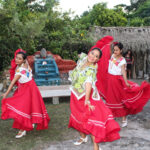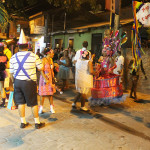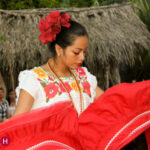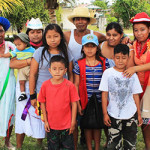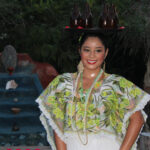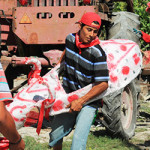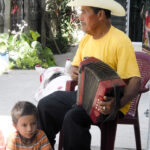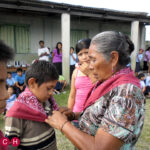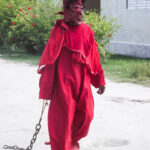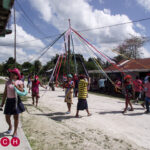Who are the Mestizos?
Who are the Mestizos?
Mestizos, Latinos, Hispanics are people with Maya and European lineage. The first major arrival of the Mestizo in Belize was during the Caste War in Yucatan (1848-1901).
The Caste-War was the result of racism and economic oppression against the Maya by the Spanish. Thousands of people settled in northern Belize increasing the population of the settlement from 9, 809 in 1845 to 25, 635 by 1861. The arrivals included Maya, Mestizo and ‘White Yucatecos’.
As with all socially constructed concepts such as race, ethnicity and culture, the term ethnicity refers to a people who share common national or cultural traditions/beliefs which are usually bound in history or territory. These values and traditions are not unchanging. Ideas are constantly being exchanged between people, it is inevitable that some values will change or become incorporated. Therefore a person can look Maya but identify themselves as Mestizo and vice versa.
Nonetheless, there are still come core traditions that define people’s identity and culture. Let us look at some of the main cultural features of the Mestizos.
Language
In the case of Belize, the Mestizo language is Spanish-based. Maya, English and Creole words have becoming increasingly integrated in the everyday language of Mestizos.
Food
Corn, the staple of the Maya people, has also become the staple of the Mestizos. Tortillas are an important accompaniment to dishes such as stew beans, escabeche, tamales, tacos, chimole and relleno.
Dress
The Huipil tends to be worn mostly on ceremonial occasions. Interestingly, the huipil has been worn by Maya women since antiquity as seen in the archaeological record. Have you noticed how it is the women who are the carriers of culture.
However you are as likely to find Mestizos sporting the latest fashions as any other ethnic group.
Religion
Historically, Catholicism was the dominant religion with the inclusion of Maya rituals. Community life was bound in the celebration of the Christian calendar for which the local ‘rich’ were donors for mestizada – a dance.
Folklore
Ixtabay, La Llorona, Simite, Tata Duende are examples of Mestizo folklore. La Llorana is about a weeping woman who mourns the drowning of her child after an illicit affair. Tata Duende relates stories about a small man who is guardian of the forest, wears a floppy hat and plays tricks. These tales have entered Belizean folkloric tradition.
The next major arrival of Mestizos was from Central America.
Central American Mestizo
Belize’s formal relations with Central American countries were virtually non-existent due to its continual border disputes with Guatemala. However, during the 1970s and 1980s, civil wars in Guatemala, El Salvador, and Honduras forced many people to leave in search of safer environments.
Belize, Mexico and the United States were the destinations of many of these people with Belize getting the least number. Although Central American immigrants have settled throughout the country, most settled in the rural areas of Cayo, Orange Walk, and Toledo districts. In 1984 Belize gave legal status to some 9000 refugees under its Amnesty program while many more became legalised as permanent residents or remained undocumented (estimated figure of 25,000). Comparatively speaking the 15,000 immigrants from the Caste War far out number the 9,000 registered Central Americans in the 1980s but unlike the first major immigration, the Central Americans almost made an immediate impact. They mostly found low skilled jobs in the citrus, banana and sugar industries and in construction.
The communities of Salvapan, Armenia, Valley of Peace, Las Flores and Bella Vista line the Hummingbird and Southern highways.
Nevertheless, these Central American immigrants while integrating into Belizean society also contribute to the cultural diversity and values of Belize.
Changing Belize
The emigration of English-speaking Creoles and Garifuna to the United States and the immigration of Spanish-speaking Mestizos from Central America exacerbated ethnic tensions and challenged long-held assumptions regarding the character of Belizean ‘national’ culture, which has traditionally been oriented toward the English-speaking Caribbean Although Creoles comprise less than 25 percent of the total population, according to the 2000 census, they have long considered Belize “their” country—black and English-speaking. The growing Mestizo population at 49-50 percent is not allaying their fears. Moreover, Guatemala’s persistent claim to Belize’s territory has increased Creole antagonism toward Hispanic culture. However cultural transformation is taking place despite these fears, most evident in the food, language, political and economic arenas.

